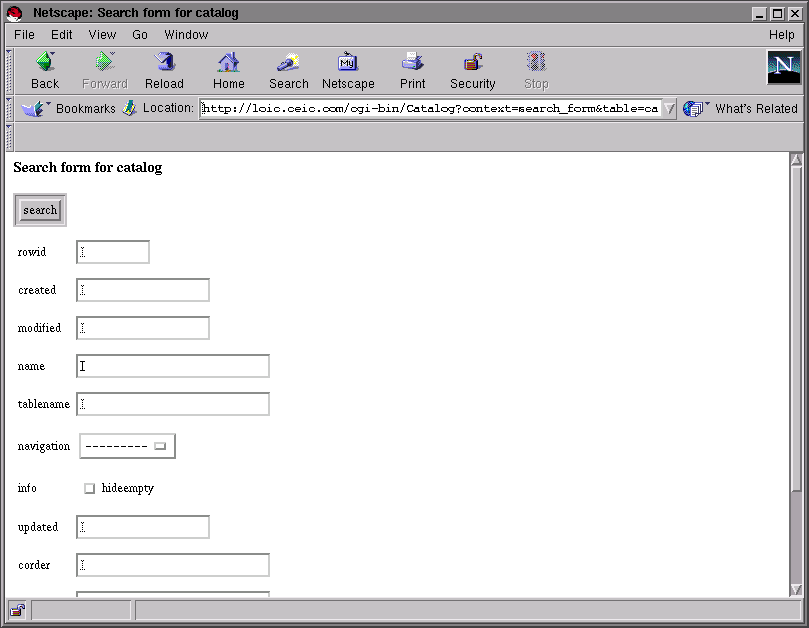Go to the first, previous, next, last section, table of contents.

- `Description'
-
The HTML form to search in a table
may either be generated by a cgi-bin or
be a static HTML page. The advantage of generating the search form is that
you don't have to explicitly list all the search criterion, they can be
generated automatically by the cgi-bin.
The search form works as a basic query by example. Each parameter may
contain a value. The search process will retrieve all the records of the table
that match all the provided values.
For instance, if a table has the url field and that the parameter
url is provided with the http://www.ecila.fr/ value, only
the records whose field url contains http://www.ecila.fr/
will be retrieved.
The values from the parameters are translated to SQL expressions according
to the data type of the corresponding field. All the expressions generated
are joined with the and keyword. The resulting expression is
used as a where clause to retrieve records.
Here is a table that shows which where expression is generated depending
on the data type of the field and the value entered by the user.
- `integer or time'
-
- `value'
-
field = value
- `< value'
-
field < value
- `> value'
-
field > value
- `char'
-
like 'value'
- `set or enum'
-
like '%value%'
It is not possible to specify a negation, search for null fields or to change
the and keyword to or.
Note that the default values for fields are not shown on the search form.
- `Template file'
-
See section sqledit_search_form.html.
- `Parameters'
-
- `context (mandatory, search_form)'
-
- `table (mandatory)'
-
- `
table parameters'
-
See section Database table parameters.
Go to the first, previous, next, last section, table of contents.

